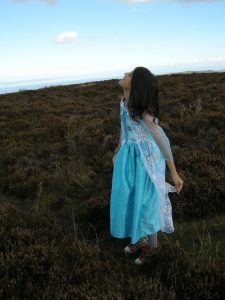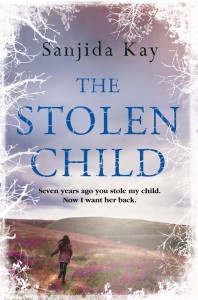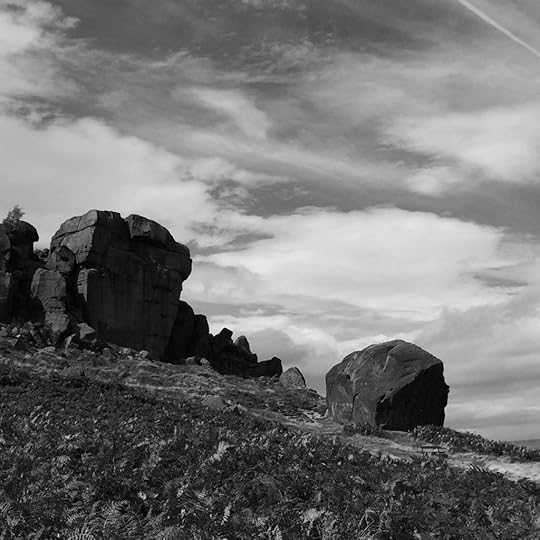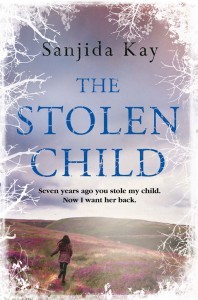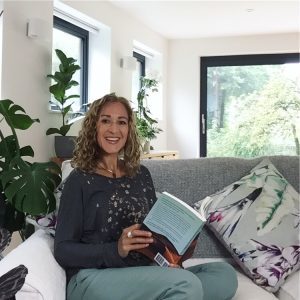Sanjida Kay's Blog, page 3
June 23, 2021
Bone by Bone – Press
Sunday Express– one of ‘The best reads in 2016’
Bone by Bone is a ‘breakout debut’ and ‘a title you won’t want to miss’ Jake Kerridge in the Sunday Express
Told in alternate chapters from both mother and daughter’s viewpoint, this novel about the insidious nature of bullying escalates into a tale of violence, fear and suspense. Daily Mail
BONE BY BONE was born out of Kay’s musings about what would happen if a mother fought back against her child’s bullies. Jessica Driscoll THE BIG THRILL
INTERVIEWS‘I’m interested in the intensity of the relationship women have with their mothers and their daughters; the idea that you are always a daughter, and once you have a child, you will never stop being a mother…’
In conversation with thriller writer, Holly Seddon, author of Try not to Breathe. Off the Shelf Books
‘I’d probably call NASA…’ In conversation with Liz Loves Books

Q&A in Bristol Life
Q&A with Jackie Law at Never Imitate
You have set the book close to where you live, painting the nature reserve in particular as oozing menace. Do you feel safe in your neighbourhood?
Find out what frightens Sanjida…
REVIEWS‘Screamingly realistic…A debut novel which I can honesty say put me through the emotional wringer. Highly recommended.’
‘Haunting…topical…scary…Excellent.’ Steph’s Book Blog
‘Gripping? Hell yes….A fantastic debut.’
‘One of the most compelling books I’ve read in a long time…chillingly realistic…Sanjida Kay brings Bone by Bone to a satisfying conclusion, which she does with sensitivity and a great deal of compassion.’
‘Sanjida Kay’s Bone By Bone is one of the most powerfully written and compelling books that I’ve read in a long time. Billed as a psychological thriller, it certainly does thrill, it has a deep psychological pull, but it also delves deeply into the insidious and damaging world of the bully and the bullied…complex, chilling, a page-turner.’
Anne Cater on Random Things Through my Letter Box
The story as it unfolds is totally gripping and the sheer terror is palpable at every turn of the page…a tense twisting psychological thriller that creeps under your skin and stays there. Bone by Bone must be read with the lights switched on and ignore that knock on the door.
John Fisher on The Last Word-Book Review
5 stars
‘a gripping psychological-thriller storyline packed full of emotion and those moments where you think to yourself, ‘What would I do in this situation’. If I’m honest, I have no idea- and it made for really interesting, riveting reading,’ says Laura in her blog, Snazzy Books.
5 stars
‘a great thriller and a true page turner’ Aggie’s Books
Rosie Canning writes:
‘There is an underlying sense of unease throughout the novel…the narrative builds and builds to an unexpected climax…A disturbing psychological thriller, here is a writer who knows how to upset a readers equilibrium.’
Review by Books, Life and Everything:
‘A dark thriller…The climax of the story stretches the tension to breaking point. In all, I found this debut novel eminently readable, a real page turner in fact.’
Blabbering about Books says:
‘There was SO much tension in this book. From the very beginning there was a sense of unease weaving through the pages and as the plot progressed it intensified to the point where I was frightened..I couldn’t keep reading it in the dark.’
4 stars
On Never Imitate:
‘a skillfully written exploration of the insidious damage caused by bullying…The denouement is tense and terrifying…A tightly written thriller that gets to the heart of issues too many must face. An accomplished debut and a haunting read.’
5 stars
‘It is a long time since I read a full book in one day but this novel was impossible to put down.’
Book blogger, Over 40 and a mum to one, writes:
‘I was literally holding my breath towards the end of the book. Bone by Bone, builds and builds and the ending doesn’t disappoint.
I loved reading this book, can you tell? It’s very clever, there are aspects of it that really could happen to any of us.’
4 stars from Tracy Shepherd:
‘I found this a disturbing read, and could quite easily put myself in Laura’s shoes. Just how she reacts is a testament for her love for her daughter.’
Bibliophile Book Club says she couldn’t put Bone by Bone down. 4 stars
‘Bone By Bone is a stunning book. It is so tense and it just hooks you completely from the first page…Sanjida Kay has written a brilliant book. Wrought with tension from the beginning, the reader is pulled in from the first chapter and they are not let go until the very last page!’
Book blogger, The Book Magnet, gives Bone by Bone 5 stars
‘I was so impressed with this book; I don’t think I have ever experienced such a broad spectrum of emotions in one book…an emotional rollercoaster and an outstanding debut.’
Book blogger, Liz Barnsley, from Liz Loves Books says, Bone by Bone is ‘excellent – emotional, hard hitting and scary. ‘You will be glued to the pages. Highly recommended.’
4 stars
GUEST BLOGS
My Writing Room on Novelicious
Spotlight on author, Sanjida Kay, on Shaz’s Book Blog.
A Conversation with Sanjida Kay Greenacre Writers
Switching Genres on The Literary Sofa
Fairy tales in thrillers in Women Writers
Where’s the diversity in grip-lit? in Asian Writers
Author interview over at The Book Review Café
PostBlockNo block selected.Open publish panel
‘I think if you want to write, you need to carve out the space to do it,’ she says. ‘It’s also about being a professional about it: showing up for yourself and saying ‘I’m going to set aside this much time to write’ rather than thinking you’ll wait until an idea strikes. I think it gets easier as you do it more because you’ve practiced, but it never gets easy or stops being a challenge.’
My Mother’s Secret – Press
Sunday Express– one of ‘The best reads in 2016’
Bone by Bone is a ‘breakout debut’ and ‘a title you won’t want to miss’ Jake Kerridge in the Sunday Express
Told in alternate chapters from both mother and daughter’s viewpoint, this novel about the insidious nature of bullying escalates into a tale of violence, fear and suspense. Daily Mail
BONE BY BONE was born out of Kay’s musings about what would happen if a mother fought back against her child’s bullies. Jessica Driscoll THE BIG THRILL
INTERVIEWS‘I’m interested in the intensity of the relationship women have with their mothers and their daughters; the idea that you are always a daughter, and once you have a child, you will never stop being a mother…’
In conversation with thriller writer, Holly Seddon, author of Try not to Breathe. Off the Shelf Books
‘I’d probably call NASA…’ In conversation with Liz Loves Books

Q&A in Bristol Life
Q&A with Jackie Law at Never Imitate
You have set the book close to where you live, painting the nature reserve in particular as oozing menace. Do you feel safe in your neighbourhood?
Find out what frightens Sanjida…
REVIEWS‘Screamingly realistic…A debut novel which I can honesty say put me through the emotional wringer. Highly recommended.’
‘Haunting…topical…scary…Excellent.’ Steph’s Book Blog
‘Gripping? Hell yes….A fantastic debut.’
‘One of the most compelling books I’ve read in a long time…chillingly realistic…Sanjida Kay brings Bone by Bone to a satisfying conclusion, which she does with sensitivity and a great deal of compassion.’
‘Sanjida Kay’s Bone By Bone is one of the most powerfully written and compelling books that I’ve read in a long time. Billed as a psychological thriller, it certainly does thrill, it has a deep psychological pull, but it also delves deeply into the insidious and damaging world of the bully and the bullied…complex, chilling, a page-turner.’
Anne Cater on Random Things Through my Letter Box
The story as it unfolds is totally gripping and the sheer terror is palpable at every turn of the page…a tense twisting psychological thriller that creeps under your skin and stays there. Bone by Bone must be read with the lights switched on and ignore that knock on the door.
John Fisher on The Last Word-Book Review
5 stars
‘a gripping psychological-thriller storyline packed full of emotion and those moments where you think to yourself, ‘What would I do in this situation’. If I’m honest, I have no idea- and it made for really interesting, riveting reading,’ says Laura in her blog, Snazzy Books.
5 stars
‘a great thriller and a true page turner’ Aggie’s Books
Rosie Canning writes:
‘There is an underlying sense of unease throughout the novel…the narrative builds and builds to an unexpected climax…A disturbing psychological thriller, here is a writer who knows how to upset a readers equilibrium.’
Review by Books, Life and Everything:
‘A dark thriller…The climax of the story stretches the tension to breaking point. In all, I found this debut novel eminently readable, a real page turner in fact.’
Blabbering about Books says:
‘There was SO much tension in this book. From the very beginning there was a sense of unease weaving through the pages and as the plot progressed it intensified to the point where I was frightened..I couldn’t keep reading it in the dark.’
4 stars
On Never Imitate:
‘a skillfully written exploration of the insidious damage caused by bullying…The denouement is tense and terrifying…A tightly written thriller that gets to the heart of issues too many must face. An accomplished debut and a haunting read.’
5 stars
‘It is a long time since I read a full book in one day but this novel was impossible to put down.’
Book blogger, Over 40 and a mum to one, writes:
‘I was literally holding my breath towards the end of the book. Bone by Bone, builds and builds and the ending doesn’t disappoint.
I loved reading this book, can you tell? It’s very clever, there are aspects of it that really could happen to any of us.’
4 stars from Tracy Shepherd:
‘I found this a disturbing read, and could quite easily put myself in Laura’s shoes. Just how she reacts is a testament for her love for her daughter.’
Bibliophile Book Club says she couldn’t put Bone by Bone down. 4 stars
‘Bone By Bone is a stunning book. It is so tense and it just hooks you completely from the first page…Sanjida Kay has written a brilliant book. Wrought with tension from the beginning, the reader is pulled in from the first chapter and they are not let go until the very last page!’
Book blogger, The Book Magnet, gives Bone by Bone 5 stars
‘I was so impressed with this book; I don’t think I have ever experienced such a broad spectrum of emotions in one book…an emotional rollercoaster and an outstanding debut.’
Book blogger, Liz Barnsley, from Liz Loves Books says, Bone by Bone is ‘excellent – emotional, hard hitting and scary. ‘You will be glued to the pages. Highly recommended.’
4 stars
GUEST BLOGS
My Writing Room on Novelicious
Spotlight on author, Sanjida Kay, on Shaz’s Book Blog.
A Conversation with Sanjida Kay Greenacre Writers
Switching Genres on The Literary Sofa
Fairy tales in thrillers in Women Writers
Where’s the diversity in grip-lit? in Asian Writers
Author interview over at The Book Review Café
The Stolen Child – Press
Gripping and totally unpredictable Daily Mail
A triumph as an-edge-of seat whodunit and a psychologically perceptive study of the impact of grief, loss and alienation. Excellent. The Irish Independent
An outstanding reason to read all night. Myles Knapp The Big Thrill
The story of a happy family who face the devastation of losing a child when their daughter, Evie, is abducted. The Yorkshire Post
A haunting tale of a happy family whose world is torn apart. Ilkley Gazette
INTERVIEWS
‘As a teenager I loved Wuthering Heights, and I wanted, in some way, to pay homage to such a wonderful, dark and savage story, which has inspired me throughout my life.’
Joe Melia interviews Sanjida Kay on The Stolen Child in Bristol 24/7
My Mother’s Secret – Press
‘I think if you want to write, you need to carve out the space to do it,’ she says. ‘It’s also about being a professional about it: showing up for yourself and saying ‘I’m going to set aside this much time to write’ rather than thinking you’ll wait until an idea strikes. I think it gets easier as you do it more because you’ve practiced, but it never gets easy or stops being a challenge.’

Interview in Bristol 24/7
Describe your typical day:
‘I hustle my daughter into her school uniform, listen to her read and walk her to school. I go home or to a cafe and write until it’s time for the school run. I aim for 1,500 – 2,000 words between 10.30 am and 2.30 pm. When I’ve retrieved my daughter from school, we fill in our grateful diary together – her entries are hilarious (gratitude for her lion mask figures way more prominently than gratitude for her Mum).’
Interview with Vicki Psarias for her Honest Mum blog
‘I’m a big fan of Henry James, who is a master of psychological understatement, nuance and what we think others may be thinking about what we’re thinking. He was also one of the first psychological thriller writers with Turn of the Screw.’
Interview with The Big Thrill

April 9, 2021
The Stolen Child: A dark fairy tale
‘They stole you from me. They took you away for seven years. Your entire lifetime…Make no mistake, my darling. I am coming for you. I will take you back.’
The Stolen Child is about a couple, Zoe and Ollie, who long for children and when they’re unable to have their own, they adopt a little girl, Evie, from birth. But when she turns seven, Evie receives a card from her real father, telling her that she was stolen from him. Like most thrillers, the idea began as a one-liner…but when I started to flesh out the story, I realised that I had another, darker influence…
My mother and step-father are Irish and I grew up in Ireland before coming to live next to Ilkley moor, where The Stolen Child is set. So my Irish background, and then moving to West Yorkshire when I was eight, played a huge role in shaping the kind of story I’ve told, as well as where it takes place.
Many Irish myths and folktales revolve around the little people, or faeries: one of the frequent themes of these tales is of a child who is spirited away by the faeries to the underworld, and then either returned years later when everyone they know is dead, or replaced with a changeling. When we were children, we used to chant a poem about faeries by Donegal poet, William Allingham. It seems to start off light-heartedly – Up the airy mountain, Down the rushy glen – but grows ever more sinister:
They stole little Bridget
For seven years long;
When she came down again
Her friends were all gone.
I’m sure Allingham influenced WB Yeats who, at the age of 21, wrote The Stolen Child, also about a child being taken away by the little people, and which gave me the idea for the title of my novel.
Come away, O human child!
To the waters and the wild
With a faery, hand in hand,
For the world’s more full of weeping
than you can understand.
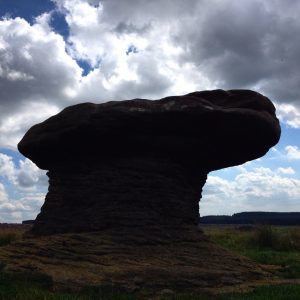 Of course, there are no faeries in my story: it’s set in modern-day suburbia, and any nastiness is purely the result of our all too human desires. But there’s a dark thread that runs through The Stolen Child borrowed from those ancient stories. Evie, gorgeous and innocent though she is, may be damaged. Her biological mother was a drug addict. When Zoe first sees Evie as a baby, she finds it hard to love her:
Of course, there are no faeries in my story: it’s set in modern-day suburbia, and any nastiness is purely the result of our all too human desires. But there’s a dark thread that runs through The Stolen Child borrowed from those ancient stories. Evie, gorgeous and innocent though she is, may be damaged. Her biological mother was a drug addict. When Zoe first sees Evie as a baby, she finds it hard to love her:
‘Something is not quite right. I struggle to inhale. Something is wrong. Seriously wrong…She doesn’t look like our child. She doesn’t look like a baby at all. Not a human one.’
And later Zoe worries about Evie’s ‘quirkiness’, as if her daughter, a dark child in a blonde family, is a changeling. And then, there is the setting – Ilkley moor – where the heather is interspersed with rowan trees, which in Ireland, belong to the little people. You must never fall asleep beneath one of them… There’s something too about the age seven: it’s a time when there’s a big shift in brain development and children start having a conscience and becoming more emotionally and cognitively aware. Evie, as she turns seven, starts to realise what it means to be adopted, to be the outsider within a family. The faeries only release little Bridget after seven years…and seven is the number of years you’d serve in prison if your crime was extremely serious, but not quite as bad as murder…
In Yeats’ poem, the child initially wants to go with the faeries because they promise to give him stolen cherries and take him somewhere beautiful, away from the woes of the world. But when he agrees, they reveal the true nature of what they’re doing and what the child will lose. And Evie, like many adopted children, is, at first, intrigued and beguiled by the idea of her real father coming to take her away.
‘Evie is our beautiful, dark-haired, green-eyed child,’ I say. I can hear the tremor in my voice. ‘Like many seven-year-old girls, she’s obsessed with princesses. We think she looks more like a fairy… Please find her. Please bring her back to us. We miss her beyond measure. She is the love of our life.’
But to find out who has really taken Evie Morley, you may just need to read the whole story…!
March 2, 2021
Wuthering Heights – the novel that has influenced me the most
When I was a teenager, I steadfastly refused to believe that so-called ‘classical literature’ could be better than the assortment I chose from the local library. What did these authors have to tell me? By this time in my life I had lived in several countries, attended eight out of what would be ten schools and knew no one else who was mixed-race. I feared so-called classics would be dull, staid and part of ‘the establishment’ that I was so busy rebelling against.
And then I read Wuthering Heights by Emily Brontë. Brontë’s tale, set on Haworth’s bleak and beautiful moorland resonated with me, partly because I spent my teens living on either side of Ilkley Moor.
As a sixteen-year-old, I understood Cathy’s passion:
‘He’s more myself than I am. Whatever our souls are made of, his and mine are the same.’
I was shocked by the power and the savageness of some scenes: the one in which Lockwood grabs a child’s wrists and saws them across broken glass still haunts me. But most of all, what struck me was how easy to read this story was: it is a gripping, page-turner; the writing is beautiful and profound; there is something about this multi-generational tale of love and loss that moved me then, and moves me still. As a teenager, I thought it spoke directly to me: do you choose the person who rocks your world but is ultimately unstable, or the one who is boring but steadfast and will give you security?
Now, or course, I see more layers and nuances in Brontë’s novel. My fiction has always been gothic with an almost super natural element running through it. I’ve read, and re-read Wuthering Heights, and in my second psychological thriller, The Stolen Child, I turned back to the Yorkshire moors as the setting for a kind of demonic love story. It was a great excuse to re-read Wuthering Heights.
For more on Wuthering Heights, I’ve recorded two podcasts for the Royal Literary Fund. Here’s the first one:
My Mother’s Secret – Location
There’s a thin band of cream silhouetting the cranes that hover over the half-built office blocks in the city centre. I head home, below an arc of houses that will be bright as jewels when the sun comes up. At this time of the day, it’s beautiful; the river is still, and seagulls fall above it, like flecks of confetti.
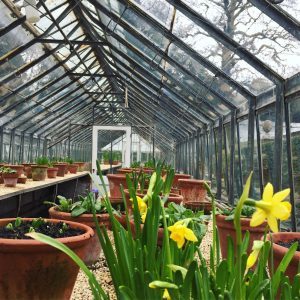 I love Bristol, where I live, as anyone who’s read my first thriller, Bone by Bone, might be able to guess! For my third, My Mother’s Secret, I’ve returned to Bristol as a location, but also placed another character – Lizzie Bradshaw – in Leeds and the Lake District. The settings in my novels are extremely important to me, but I’m certain a well-drawn location enhances any book. Can you imagine Salman Rushdie’s Midnight’s Children without the blooming buzzing confusion of Delhi, or Bright Lights, Big City by Jay McInerney without the smell of money and crack-hustle of New York?
I love Bristol, where I live, as anyone who’s read my first thriller, Bone by Bone, might be able to guess! For my third, My Mother’s Secret, I’ve returned to Bristol as a location, but also placed another character – Lizzie Bradshaw – in Leeds and the Lake District. The settings in my novels are extremely important to me, but I’m certain a well-drawn location enhances any book. Can you imagine Salman Rushdie’s Midnight’s Children without the blooming buzzing confusion of Delhi, or Bright Lights, Big City by Jay McInerney without the smell of money and crack-hustle of New York?
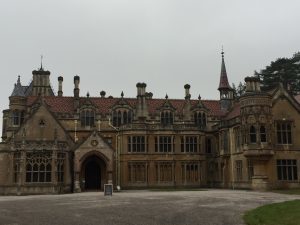 A detailed backdrop in fiction helps create a tangible world for one’s characters, as well as being a tool the writer can use to heighten tension or thicken the atmosphere. My main character, Emma Taylor, lives in a leafy suburb of Bristol: Long Ashton. The ‘world’ this woman inhabits tells us a lot about who we think she is: middle class, comfortably off, the kind of person who shops in M&S for a treat and takes her youngest daughter to ballet lessons. It seems calm, safe, secure. Emma, though, is tense and anxious: she’s hiding a secret from everyone she knows, so Long Ashton appears the perfect place for her. Similarly, her job as a baker makes us believe she’s in a cosy, comforting cafe, filled with the scent of bubbling yeast and buttery croissants. When the reader discovers the bakery is actually in a tunnel beneath a train station, it might, perhaps, start ringing alarm bells. In contrast, Belle Isle in Leeds city centre, where Lizzie Bradshaw works, really is a dark and dangerous place.
A detailed backdrop in fiction helps create a tangible world for one’s characters, as well as being a tool the writer can use to heighten tension or thicken the atmosphere. My main character, Emma Taylor, lives in a leafy suburb of Bristol: Long Ashton. The ‘world’ this woman inhabits tells us a lot about who we think she is: middle class, comfortably off, the kind of person who shops in M&S for a treat and takes her youngest daughter to ballet lessons. It seems calm, safe, secure. Emma, though, is tense and anxious: she’s hiding a secret from everyone she knows, so Long Ashton appears the perfect place for her. Similarly, her job as a baker makes us believe she’s in a cosy, comforting cafe, filled with the scent of bubbling yeast and buttery croissants. When the reader discovers the bakery is actually in a tunnel beneath a train station, it might, perhaps, start ringing alarm bells. In contrast, Belle Isle in Leeds city centre, where Lizzie Bradshaw works, really is a dark and dangerous place.
A couple of boys around thirteen, but already taller than her, were hanging about on the street corner, and there was another group of young men in the centre of the housing estate, smoking and swigging from cans. She could hear the wind, boxed in by the flats, moaning round the corners. Chocolate wrappers and newspapers rustled across the ground, and a Staffordshire terrier tied to a bench with rope growled at her through bared teeth.
 Stella, Emma’s fourteen-year-old daughter, is determined to discover what her mother’s secret is. She’s a spiky, book-obsessed girl, and constantly reads Jane Eyre to make herself feel less anxious. Many of the Bristol scenes take place at Tyntesfield, a gothic mansion near Long Ashton.
Stella, Emma’s fourteen-year-old daughter, is determined to discover what her mother’s secret is. She’s a spiky, book-obsessed girl, and constantly reads Jane Eyre to make herself feel less anxious. Many of the Bristol scenes take place at Tyntesfield, a gothic mansion near Long Ashton.
William Gibbs’ collection of curiosities is stacked up and draped in sheets, but my torch picks out a few that haven’t been covered up: a glass dome with tiny, stuffed hummingbirds, the smooth carapace of an ostrich eggshell, a jade-green ammonite. This would be the perfect place for someone to stalk us. There are so many hiding places.
 The architecture and the claustrophobia of the rooms mirror both Stella’s gothic obsession, and the escalating tension in Emma’s life. The suburbs and the city centre are densely populated: as Emma says, ‘I like being surrounded by people – it feels safe;’ Lizzie, who lives in a remote village in the Lake District, feels safe precisely because there is no one around. She tells DI Simon Duffield, ‘You can walk for miles and never see a soul. Please, let me go home. I’ll be safe there.’ But, of course, in a thriller, nowhere is safe and the places we feel most secure are often the most dangerous.
The architecture and the claustrophobia of the rooms mirror both Stella’s gothic obsession, and the escalating tension in Emma’s life. The suburbs and the city centre are densely populated: as Emma says, ‘I like being surrounded by people – it feels safe;’ Lizzie, who lives in a remote village in the Lake District, feels safe precisely because there is no one around. She tells DI Simon Duffield, ‘You can walk for miles and never see a soul. Please, let me go home. I’ll be safe there.’ But, of course, in a thriller, nowhere is safe and the places we feel most secure are often the most dangerous.
SaveSave
December 1, 2020
Interview with Historical Fiction Reader
…one of
the scenes I lost, which I pine for, is where Joseph is in a small canoe, floating down a river lined with boats full of orchids that are for sale.
I’ve just been interviewed by Erin Davies, aka the Historical Fiction Reader, about my latest historical novel, The Priest and the Lily.
Erin had some interesting questions. The one above is the answer to: Which scene ended up on the cutting room floor?
There were many, but I particularly loved the opening scene, described above, although, it was, ahem, probably too flowery.
She also asked me about my inspiration, my characters and what fantasy cast I’d pick!
The rest of the interview is here
Let me know what you think!
Marketing and Me
‘I don’t much like it. Marketing is about selling & writers, as we know, are about writing and reading. They’re generally not known for their ability to get you to buy a Prius when you wanted a Yaris’
I’ve recorded a podcast about having to market myself for The Royal Literary Fund – publishers expect authors to promote themselves these days, as I’m sure you know!
If you’re a writer, how do you feel about it?
‘Hyping one’s novel can sound boastful. Secretly, most of us hope we’re Dostoevsky, whilst being plagued by doubt. There is an allure, in these days of posts & tweets, of becoming a writerly recluse’
Let me know what you think. You can listen here: https://buff.ly/3liP3ra
November 4, 2020
The Priest and the Lily will be released as an audiobook!
The Priest and the Lily is going to be released as an audiobook soon! I’m really pleased to announce that Mike Jaimes will be narrating it. Mike has a beautiful story-telling voice that draws you in.
Authors are notoriously hard to please, as we’ve been living with our characters in our heads for many years, but I really feel as if Mike has captured Joseph, the novel’s main character, perfectly. It’s as if I’m inside Joseph’s mind, when I listen to Mike’s narration.
Here’s a sample of the work-in-progress.
The Priest and the Lily opening chapter
Can’t wait for you to hear the whole story!

